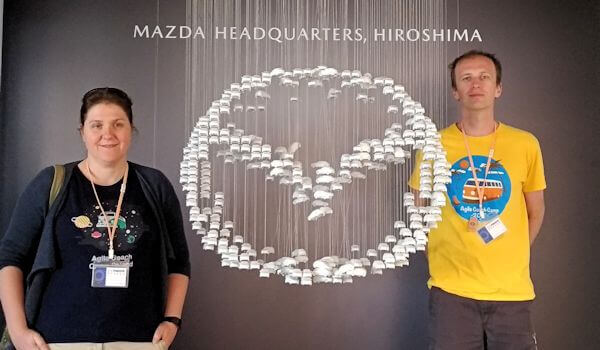1. Focus
Toyota is all about the process. The visit let you learn details about Toyota Production System (TPS). During one hour trip through factory you will see TPS tools – Kanban cards, Andon and Poka-Yoke. Each of them will be explained in details and you’ll hear how Toyota workers improve their process through small changes (Kaizen).
Mazda is all about making cars. Sure, you’ll visit the assembly line, but it will take less than a quarter from your hourly trip. The rest you’ll spend watching how Mazda cars are designed, how engineers make sure these are safe, ergonomic and fun to ride. You’ll learn how much attention is put to make the perfect car body. Mazda says, that a car is not simply a mass of metal, but it’s a living creature with emotional bound to its driver. That’s Mazda’s ultimate goal of Kodo – “Soul of Motion” design. So, as much I was amazed by TPS, I was impressed by Mazda design as well.
2. Size
Unless you’re a fan of a car production you might not be aware how huge the difference between Toyota and Mazda are. There are ten plants in Toyota city and just one with two assembly lines in Hiroshima. Toyota has another two plants in Japan and twenty-five over the world. Mazda has one more plant in Japan plus five manufacturing and four assembly plants worldwide. As a result, in 2016 Toyota produced over 10 million vehicles, where Mazda assembled over 1,5 million.
3. Production
With Toyota focus on process, there’s no surprise their production system is made to be super effective. Cars were moving fast on the assembly line. Workers had precisely defined, simple tasks to perform within short cycle – I think they were spending less than half a minute working on one unit. And these people were moving fast. All parts had its well-defined place. Everything was packed in a small area, so the distances between workstations were minimal.
On the other hand, everything in Mazda was just slower. If I could not imagine how I could keep the pace in Toyota, the speed of work in Mazda was way more sustainable for me. The cycle was also longer and workers had more tasks to perform on single units. Mazda is using Lean tools such as Kanban, Andon and Poka-Yoke. However, we have seen things Toyota would call wastes such as greater distances between workstations leading to more transportation needed, or people walking for required parts resulting in unnecessary movements. There’s also less automation in Mazda. As a result, Mazda assembly line takes significantly more space. What’s interesting however, is that it takes 15 hours from stamping to final inspection in Mazda and 17 hours in Toyota’s Takaoka Plant.
You can learn more about Mazda from Mazda Museum website.

